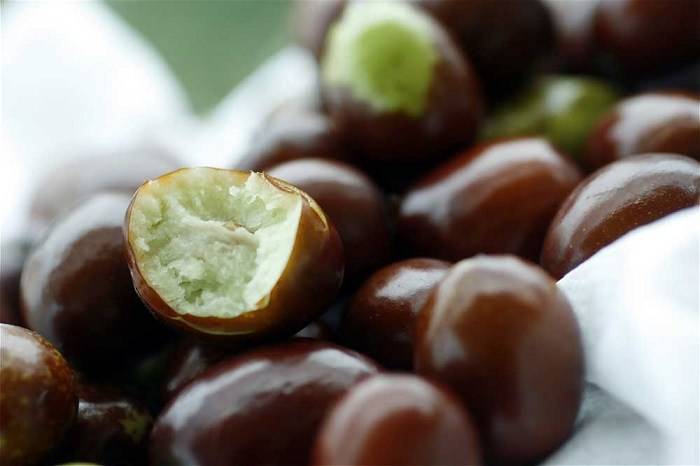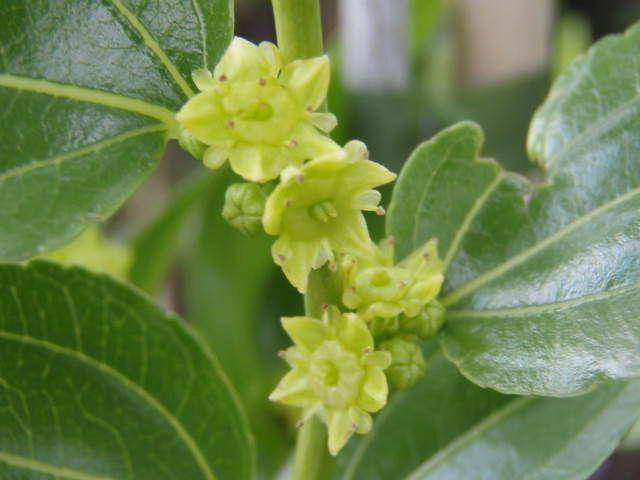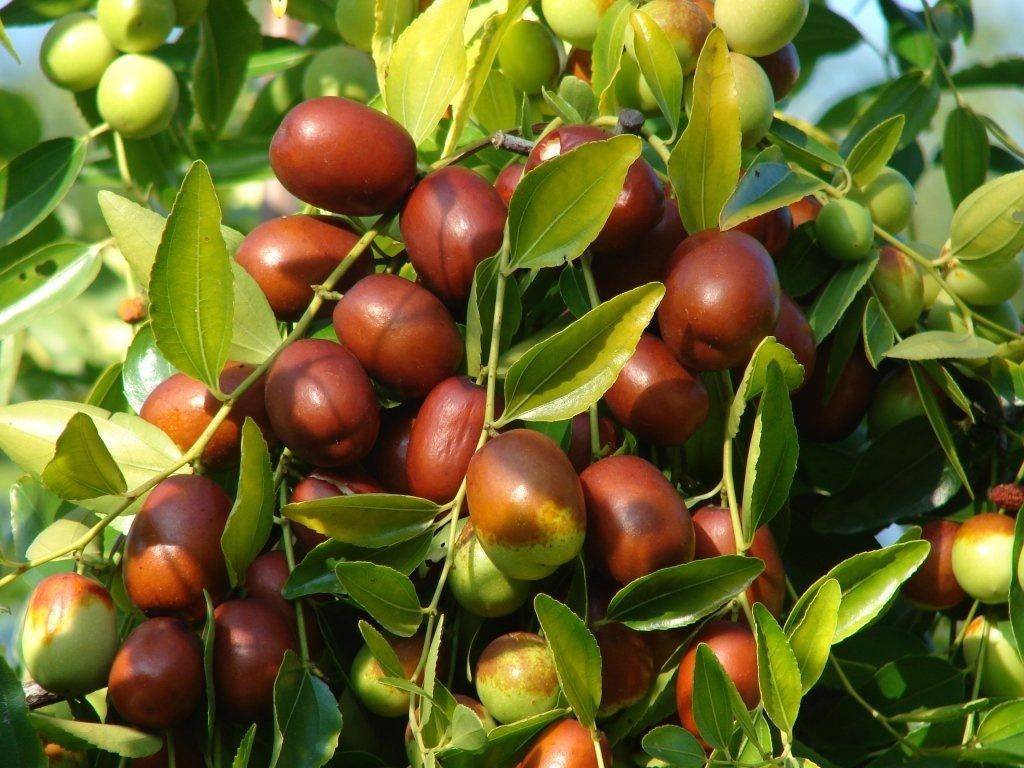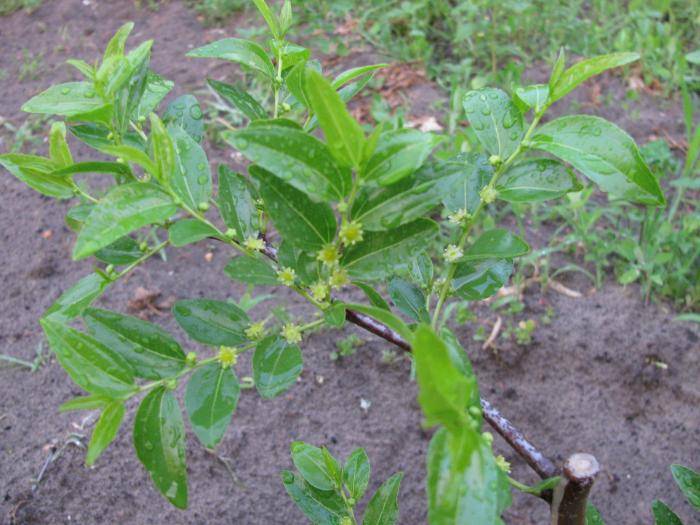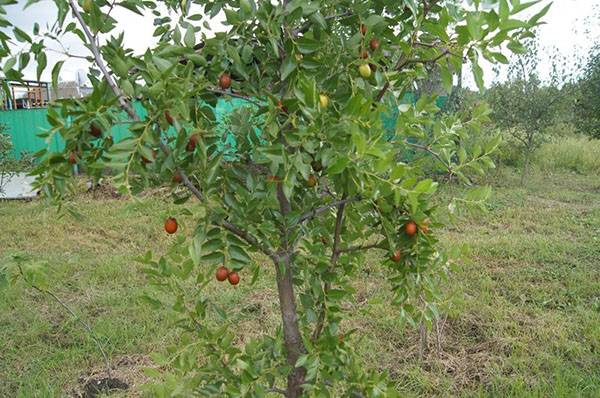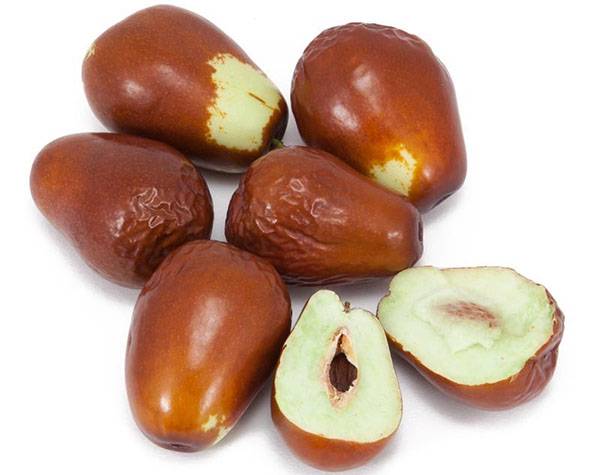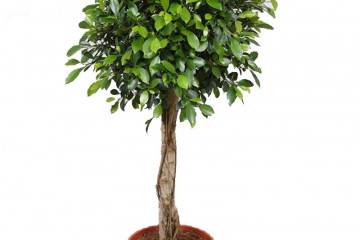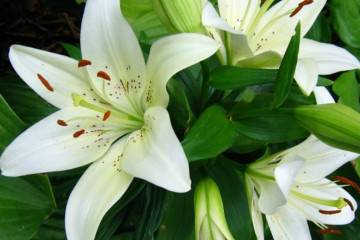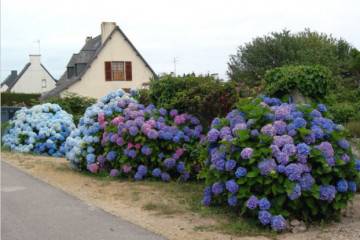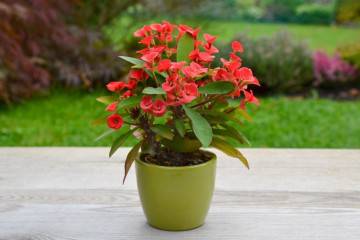Chinese date - how to plant and care for it
Content:
There are plants, the healing properties of which are legendary. One of these natural healers is the Chinese date, or unabi. It should not be confused with ordinary dates, as it is a tree, not a palm tree. The popularity of the unabi fruit is due to its high nutritional, dietary and medicinal properties. Their pulp contains a huge amount of various acids and vitamins. It is these qualities that arouse interest in the peculiarities of growing unabi.
Description of Chinese date
Unabi, or ziziphus, belongs to the Krushinov family. Under natural conditions, it grows in India, China and Iran, as well as in the countries of Central Asia, it has been successfully cultivated for a long time.
The flowers are fragrant yellow, sometimes have a greenish tint, they are collected in the axils of the leaves.
The fruits are covered with a shiny skin and are dark brown or red in color. The taste is very similar to ordinary dates. Fruit size can vary from small to large depending on the species.
Beneficial features
The fruits, leaves and seeds of unabi have long been used in Chinese medicine. This plant has a variety of medicinal properties. The indications for its use are:
- high blood pressure;
- problems with the digestive system;
- stress and nervous breakdown;
- respiratory system diseases;
- heart diseases;
- decreased hemoglobin levels.
It is also recommended to eat the fruits of ziziphus to strengthen the immune system.
A special substance that is contained in the leaves of this plant is zizifin. It tends to dull taste buds, thanks to which it is used in medicine for the production of medicines with a pronounced bitter taste.
The use of these magic fruits was also found in cosmetology. You can find various serums and creams with unabi extract.
Cultivated species and varieties
There are many different varieties of unabi, but most of them are exotic plants for Rossi.
Thanks to the work of breeders, varieties were bred that are capable of growing not only in Asian countries, but in colder climates. The most common are four types: Koktebel, Sinit, Plodivsky and Yalita.
Koktebel
This wonderful variety was created by the staff of the Nikitsky Botanical Garden. The species belongs to trees of late maturity. The fruits are large and covered with characteristic dots. The species became popular due to its high yield with annual fruiting. It has medium resistance to frost and drought, but tolerates heat well.
Sinit
In the same Nikitsky botanical garden, the Sinit variety was created. This species is able to withstand cold snaps down to -12 ° C. Another distinctive feature of Sinit ziziphus is the excellent taste of the berries. They have a pleasant dessert taste and juicy pulp.
Plodivsky
A variety of Ukrainian origin.Its main advantage is its high resistance to drought and low temperatures, so it is quite frost-resistant.
Fruits are small in size with greenish-white flesh. The yield is average.
Yalita
A completely new variety that has many benefits. Also obtained by the staff of the Nikitsky Botanical Garden.
The fruit ripens very early. Differs in high yield and excellent fruit quality. They are rather large and juicy sweet and sour flesh.
Growing features
Unabi disembarkation can be carried out both in autumn and spring. When choosing the right timing, it is necessary to focus on the peculiarities of the climate of the region in which the ziziphus will grow.
Autumn planting is carried out from mid-September to early October. An important factor is the time of the onset of the first cold weather, before that the plant must take root and get stronger.
Landing
Before you start planting, you need to choose the right place. Zizyphus prefers sunny places, sheltered from the wind. The soil on the site should be light and well-drained. If the soil is heavy, it is necessary to add peat and sand. It is better to enrich poor soils with mineral and organic fertilizers.
Pits for planting are prepared in advance, preferably 2-3 weeks in advance. In areas with a close occurrence of groundwater, it is mandatory to create a drainage layer. The soil to fill the hole must be prepared prior to planting. At the end of the work, the seedling must be watered abundantly.
Regardless of the variety and region of cultivation, pruning is carried out only a year after planting the seedlings in the ground. At first, unabi actively builds up the root system, and the vegetative mass remains practically unchanged.
Basic rules of care
Ziziphus practically does not need watering, with the exception of young seedlings at first. You can make organic fertilizing, but this is not a mandatory item in agricultural technology.
Pruning is an essential part of caring for your unabi. It allows the plant not only to fully develop, but also to bear fruit abundantly every year.
Crown formation
Formative pruning is started after the seedling reaches the age of two years. As a rule, unabi are grown in the form of a tree with a free spreading crown.
There are several important rules.
- in the second year of growth, the central conductor is shortened to 80-90 cm and skeletal branches begin to form;
- the crown is formed in two tiers with a spiral arrangement of branches. The distance between the tiers should be approximately the same distance;
- 10-15 cm are left between the branches of the first tier, and 30-40 cm between the branches of the second;
- as it grows, small fruiting processes are formed on the central conductor. Those of them that are intended for the further formation of branches of the second order are shortened by three buds. The rest must be removed completely;
- on the branches of the first order, branches of the third are formed.
With proper pruning, you can get not only a well-formed tree, but also achieve abundant annual fruiting.
Reproduction
Several methods can be used to obtain new specimens of Ziziphus. Reproduction is applied:
- seeds;
- cuttings;
- undergrowth;
- layering.
Seed reproduction
This method can be called quite laborious, but quite applicable.
A prerequisite for growing unabis from seeds is their stratification. It is carried out for 50-70 days at a temperature of 2-8 ° C. The seeds can be preliminarily placed in fine-grained sand. You can resort to this process using elevated temperatures. Then the seeds are kept for about a month at a temperature of 25-30 ° C.
The prepared seeds are planted in the ground and covered with foil. After 25 days, shoots appear and the film is removed. As the seedlings grow, they dive into a large container.
Cuttings
This method is rarely used and is not popular with gardeners. But, if there are no other options, you can apply it too.
In mid-June, cuttings are cut 15 cm long. Then they are placed in water with the addition of a growth stimulant for several hours. After planting in a container with nutritious soil, the seedlings are covered with foil.
When the cuttings take root and move into growth, the shelter gradually begins to be removed. The next year, they are planted in the ground.
Reproduction by shoots and layering
The easiest way is to reproduce by young shoots. You just need to dig up the finished seedling and transplant it to a permanent place.
To obtain planting material by layering, the shoots are bent to the ground and pinned. In the place of contact with the ground, a mound is poured and the moisture of the soil in this place is regularly monitored. In the fall, the seedling is separated and planted in a permanent place.
How to prepare an unabi date for winter
The frost resistance of unabi depends on the variety. In the early years of growth, all species need shelter. To do this, it is necessary to spud the plantings and cover them with non-woven material.
It is almost impossible to cover older plants. This is not a threat in warm climates, but not in colder average annual temperatures.
Diseases and pests
The only serious enemy of the ziziphus is the unabium fly. Spraying with special preparations should be carried out for prevention and in the event of an attack by pests.
Unabi is a treasure trove of health. Its healing properties have been known for a long time. Due to the emergence of new varieties for growing ziziphus, Central Russia with a temperate climate is also suitable. Observing the rules of planting and care, you can get a harvest of sweet healing unabi dates every year.
